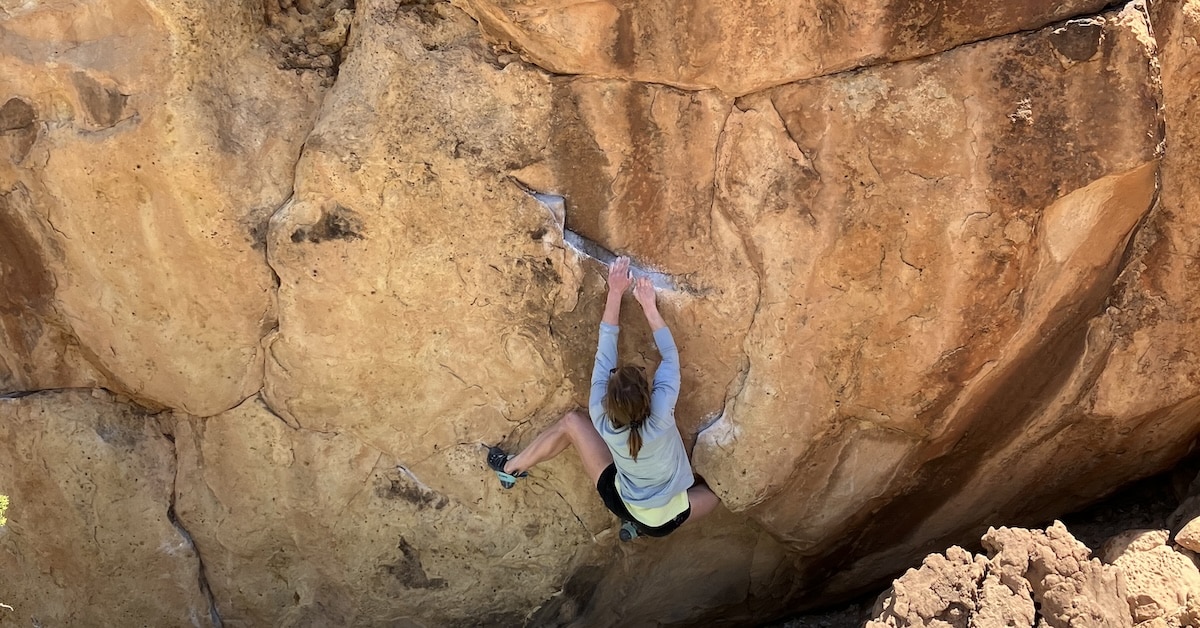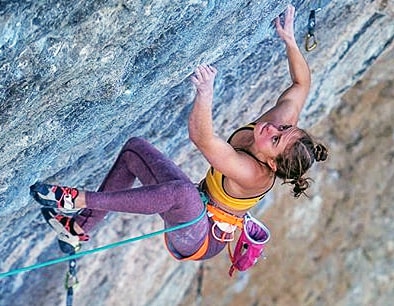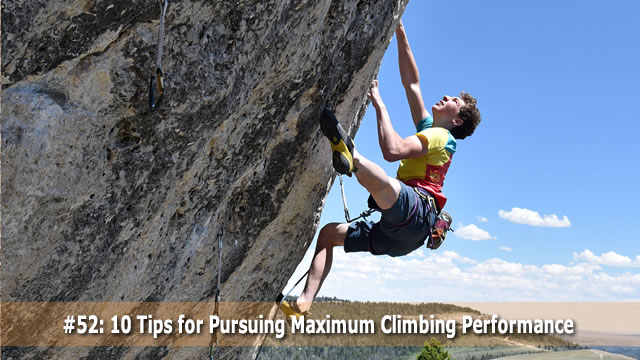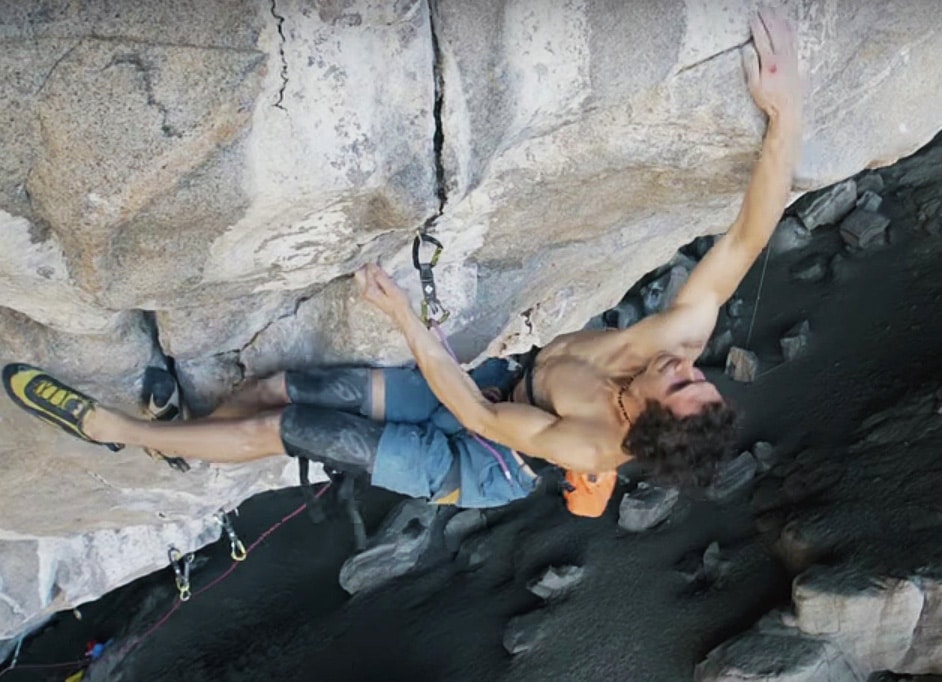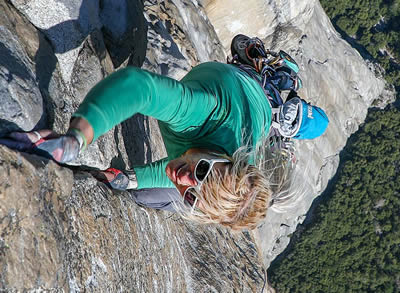Goal setting isn’t as easy as jotting down a list of what you’d like to achieve someday. You also have to consider how and when those things will actually happen, and what smaller steps you’ll need to take along the way. Learn how to put your goals on a timeline so that they never feel too far out of reach.
Ask any climber what’s on their bucket list, and they’re likely to respond with a whole host of goals they’d like to achieve someday.
But ask them what’s on the docket for, say, the next month or two, and they might not answer quite as quickly. Sometimes it’s easier to think in terms of the big picture: the lofty dreams that you’d like to see come true, yet seem too daunting to actually happen. There’s something comforting about only thinking in what if’s, because there’s no risk involved. That dream can stay intact within its perfect, untouched bubble.
But no risk means no reward. The only chance those crazy ideas have of actually coming to life is your decision to act on them. And as lovely as they seem, kept safe as vague ideas floating around in your mind, they’ll be 1000 times more incredible in reality. It just takes some planning.
Long-Term Goals
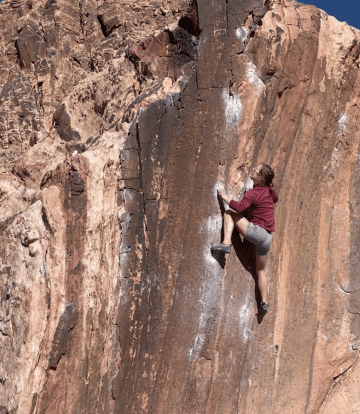
Stare down your goals like the next hold in your sights!
Start by writing down the wildest dreams you have for yourself as a climber. Yes, write them down—with an actual pen. The physical act of putting an idea down on paper is the first step to making room for it in your reality. It’s hard to deny a goal’s existence once it’s sitting there right in front of your eyes.
Consider what achievements would make you feel the most satisfied with your climbing journey, from here until the nebulous end. What grades do you hope to reach? Which summits do you want to stand on? What “first’s” do you dream of claiming? Don’t worry about time, money, or other obligations for now; just let the ideas stand on their own.
Medium-Term Goals
Now, we backtrack. Here’s where those lofty long-term goals start to take some shape. Take each big idea, one at a time, and break it down into pieces. What has to happen before you can really start thinking about the end goal? Maybe there are still a handful of grades in between your current ability level and where you’d like to be, or there are a few skills you need to master before branching out into a new sector of climbing.
Each of these to-do’s is like a checkpoint on your way to the ultimate destination. Pull out a calendar and take a look at the next three months. Which medium-term goal makes sense to put on your radar for this chunk of time? Which ones would follow from there? You’re essentially drawing up a map of your intentions, from now all the way up to that dream goal, with intermediate goals spaced evenly throughout. Think of those checkpoints as places to pause, catch your breath, and congratulate yourself. The road won’t feel nearly as long with those quicker wins built in along the way.
Short-Term Goals
Take the first medium-term goal on that timeline and break it down even further. Short-term goals determine what you do on a daily basis. They’re the guiding factors that decide how you spend each training session and what you hope to gain out of it. Looking at that first medium-term goal, think about what will go into reaching it. What specific workouts, down to the reps and sets, do you plan to do? Where will those fit in your schedule? How will you measure progress on them and consistently up the ante?
Every training session deserves its own short-term goal that links directly back to the closest checkpoint. Make them so specific that no two days have the exact same goal. For instance, your goal for one training session could be, “Perform three sets of campus board ladders on each side as fast as possible” while the next could then be, “Perform three sets of campus board ladders on each side at least one second faster than last session”. From there, you could continue to increase the time or shift your attention to the distance between rungs. Always give yourself the chance to outperform the you from yesterday.
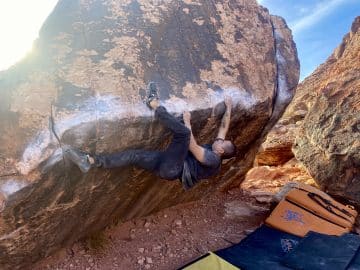
Oswaldo Zuniga puts his climbing goals into action on Alexisizer, V6 at the Kraft Boulders in Red Rocks.
What Will You Give Up?
This is the most important part. There’s a reason that you haven’t reached your future goals yet. Maybe it’s just a matter of time, but more likely it’s a matter of choice. There’s probably something about your current situation that doesn’t jive with your dreams. How do you need to change your daily routine in order to free up space for these goals to fit in? Consider what you’d be willing to sacrifice so that you can actively choose to pursue the goals you’ve set, in the short-, medium-, and long-term.
Priorities are everything. It’s ok if climbing isn’t, or can’t be, number one on your list. Family, friends, careers, and other pastimes are just as worthy of your attention. But if there’s anything you don’t actually care so much about—like late nights out or an extra hour of screen time—that you can bump down instead, then you’ll see the difference in your climbing before long.
Key Points:
- Start with your biggest goals, physically writing them down with pen and paper to set them a real place at the table.
- Break down those goals into intermediate objectives based around three-month chunks, putting them in order of application or importance.
- Divide those medium-term goals even further into weekly and daily intentions that are specific to each training session, making sure each one relates directly back to the closest medium-term goal, or checkpoint. Remember to focus each one on the process, not the outcome.
- Figure out what you need to and can give up so that your climbing goals can sit higher on the priority list.
Related Articles:
- Process Versus Outcome Goals for Plotting Your Climbing Future
- Effective Goal Setting for Climbing
- An “Intelligent System” Approach to Training and Goal Pursuit
- Mental Mastery Skills to Stretch Your Limits
- Aging is (Mostly) a State of Body
Copyright © 2000–2022 Lucie Hanes & Eric J. Hörst | All Rights Reserved.

